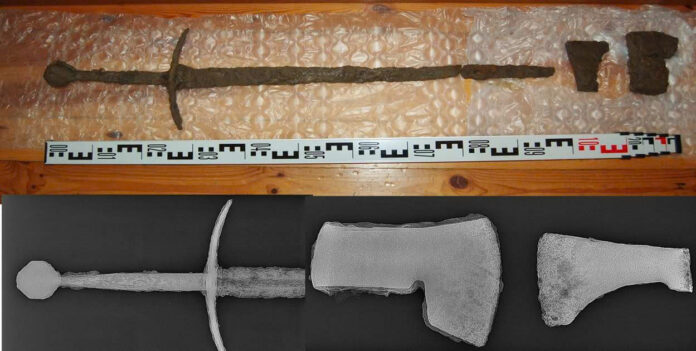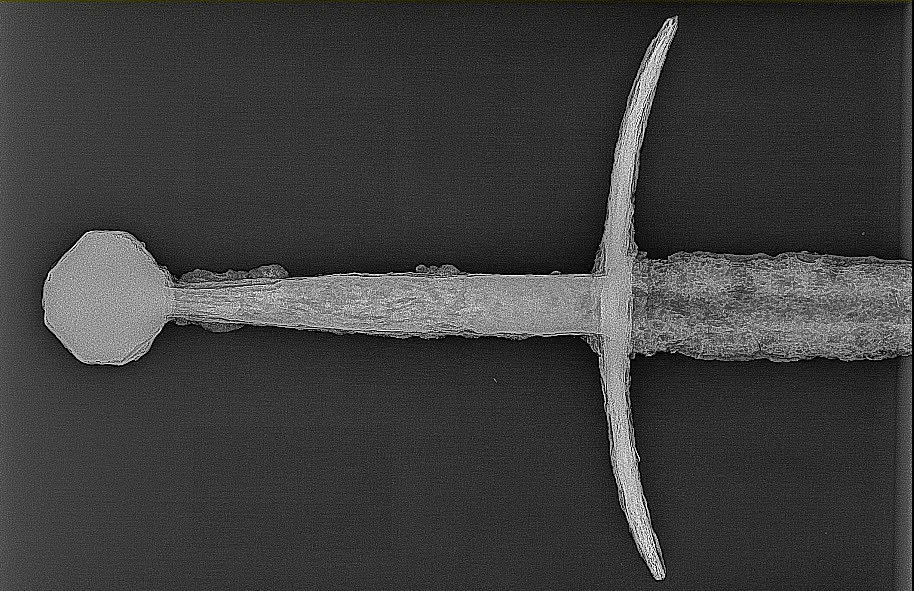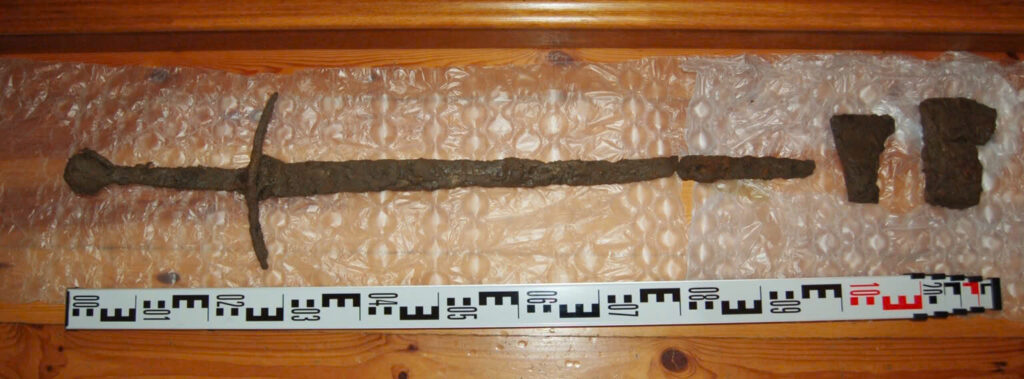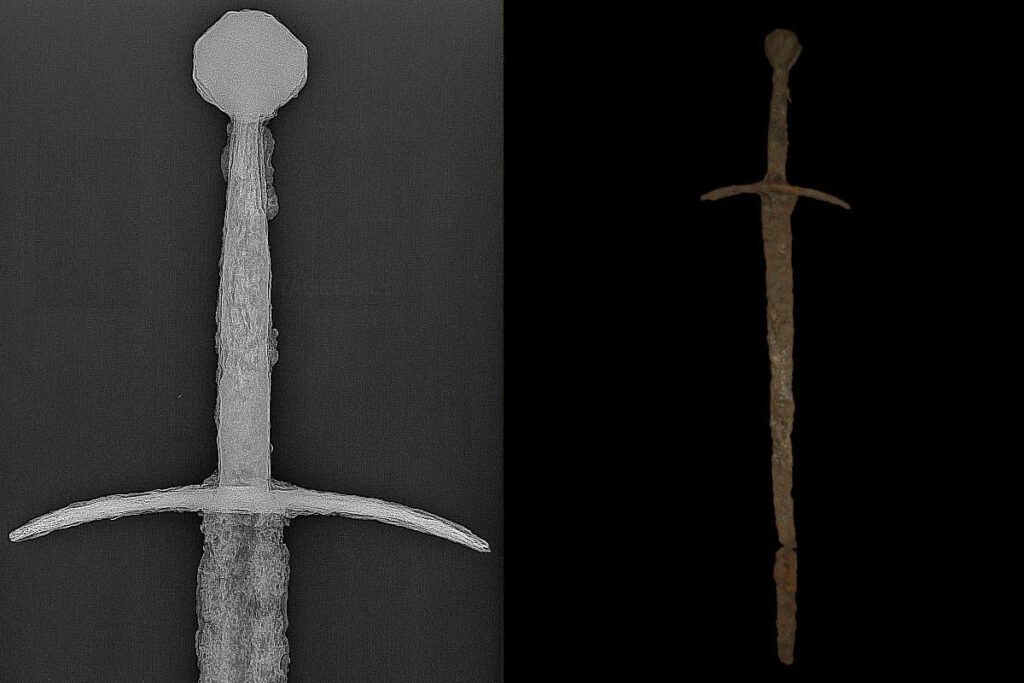
In an exceptional archaeological find, detectorists have discovered a remarkably preserved medieval two-handed sword dating back to the 14th-15th century AD in northern Poland. The rare weapon, found alongside other period armaments, offers new insights into the region’s medieval military history.
Historical Treasure Emerges from Polish Countryside
Members of the GRYF – Biskupieckie Stowarzyszenie Detektorystyczne made the extraordinary discovery during a sanctioned detection expedition near Wielka Tymawa village in Poland’s picturesque Warmian-Masurian Voivodeship. The sword wasn’t found alone – it was part of a weapons cache that also included two axe heads from the same historical period.

What makes this discovery particularly significant is the sword’s exceptional state of preservation. Unlike many medieval sword finds that are often heavily damaged by time and the elements, this specimen retains its complete hilt, pommel, and guard structure – components that typically deteriorate faster than the blade.
A Warrior’s Weapon: Design and Purpose

The impressive sword measures just under one meter in length from blade tip to pommel, closely matching the specifications of the “Hand-and-a-Half Swords” that were widely used throughout Western European battlefields during the Late Middle Ages.
Experts have noted the sword’s distinctively tapered, sharply pointed blade design – a feature that reveals its primary battlefield purpose. Rather than being primarily a slashing weapon, this sword was specially crafted for thrusting and piercing armor, making it particularly effective against the increasingly sophisticated protective gear worn by medieval combatants.
Mystery of the River Crossing

Łukasz Szczepański, an archaeologist from the Ostróda Museum who examined the find, offered intriguing context about the discovery location: “Undoubtedly, this deposit is related to the Osa backwaters. Today, this river is regulated, but in the past, it had the wild character of a meandering riverbed. Perhaps there was a bridge crossing there, where these objects were lost by their owners.”
This suggests the weapons may have been accidentally dropped during a river crossing rather than deliberately cached – offering a snapshot of medieval life and travel through this once-untamed landscape.
Video
Preservation and Public Display
The significant find has been transferred to the Ostróda Museum by the provincial conservation authority. Museum staff have already begun detailed examination of the artifacts, including X-ray analysis to reveal hidden details and assess structural integrity.

Conservation specialists will now work to stabilize and preserve these medieval treasures, with plans already in place to feature them in a permanent exhibition later this year.
“These discoveries are a valuable addition to our collection, especially since this is the first two-handed sword we’ve acquired,” noted Szczepański. “Our museum focuses on preserving medieval history and is housed in a former Teutonic castle” – making it a particularly fitting home for this remarkable blade.
Visitors to the museum will soon have the opportunity to view this rare glimpse into Poland’s medieval military heritage in a historically authentic setting.